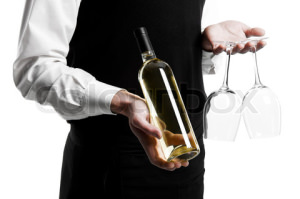October is Texas Wine Month! In honor of this occasion, Drew Hendricks of the Texas Sommeliers Association shared his insight with me for my recent article in NSide Austin Magazine. The article, “Wine Whisperers,” offers Drew’s take on why it’s a good idea to get to know the sommelier at your favorite restaurant.
Read the article online at NSide Magazine or review its content below:
It’s a relationship few of us ever think of establishing, but it can transform our entire dining experience. The relationship I am urging you to develop is with those experts known as “sommeliers” (may be pronounced, “some’ll yays”), the wine stewards whose knowledge not only helps us select the right wine to drink with dinner, but can often secure for us a hard-to-get reservation.
Yes, sommeliers really can be your best friends once you are on their list! But before I outline why getting to know the sommelier at your favorite restaurant will be one of the best moves you’ll ever make, I have a confession.
Some years ago, a group of us were attending an event at a well-known Texas vineyard. As we were making preparations, one of the bottles I was opening slipped from my hand so that the base banged loudly on the table. Everyone turned to look at me.
The vineyard owner graciously explained that wine is a living thing. In her words, it should be handled with as much care as fine porcelain or a Lalique crystal. Banging it roughly as I had unwittingly done could have cracked the bottle, and was probably going to stir up sediment from the bottom of the bottle.
A sommelier knows how to treat a good wine with the respect and care it deserves. His or her role involves three key responsibilities: 1) Select the wine for the restaurant; 2) serve wine to the guests; and 3) act as an advocate for guests who need a reservation.
To better understand this important relationship (and how you might benefit from the special knowledge these experts have acquired), I interviewed Drew Hendricks, co-founder of the Texas Sommelier Association (TexSom). Of course, before sharing his tips with you, I had to try them out myself.
Hendricks told me the best way to initiate a relationship with the sommelier is to help clarify the parameters he or she will use to recommend a wine for you.
With that tip in mind, I began my conversation by discreetly advising the wine steward how much we typically were willing to spend on a bottle of wine ($80 to $120), what kinds of wines we like to drink (Pinot Noirs, Burgundy-style Rhônes, etc.) and which wines we had previously experienced and not enjoyed. The wine selected for us was out of this world, not to mention below our price point.
Here are some of the things you might like to be aware of during Texas Wine Month (October) and beyond:
1. The taste test: When the sommelier offers you the opportunity to taste the wine before pouring it for the table, it is not to check that you like it, but to ensure that the wine is in good condition and without fault. The feedback the sommelier is looking for from you is whether the wine is oxidized or has some other unpleasant taste or smell. In related news, according to an article at www.corktaint.com, leading U.S. wine expert Christian Butzke, Ph.D., says that TCA, the compound responsible for the musty flavor in some wines, “is no longer a major problem for the U.S. wine industry,” and that cork taint today occurs at levels at or below 1 percent.
2. Red with meat, white with seafood? Have we moved past the point of adhering strictly to the “red with meat and white with seafood” rule? Maybe, maybe not, in Hendricks’ view. Wine should complement the food you are eating. For example, if you select a tannic red wine to drink with shellfish, do not be surprised if you end up with an unpleasant physiological reaction. This combination of shellfish and wine may cause a metallic taste. Again, the sommelier’s expert knowledge can help you avoid such an unpleasant experience.
3. No thanks! If the sommelier is pouring wine for the table and you either do not want any alcohol or have had enough to drink, the best approach is to simply say, “No, thank you.” Avoid placing your palm over your glass or turning it upside down. Both are inappropriate gestures and can lead to broken glass or other unfortunate results. You do not tip the sommelier separately; however, you do tip on the wine, which will be 15 percent of the amount of the pretax bill, not the total check. There are no charges for the services of a sommelier.


Leave A Comment